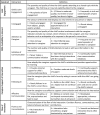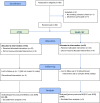Pilot Randomized Controlled Trial of the WHO Caregiver Skills Training in Public Health Services in Italy
- PMID: 34677755
- PMCID: PMC9508213
- DOI: 10.1007/s10803-021-05297-x
Pilot Randomized Controlled Trial of the WHO Caregiver Skills Training in Public Health Services in Italy
Abstract
Parents of children with ASD (N = 86; mean age 44.8 months; 67 boys) were randomized to either WHO Caregiver Skills Training (CST) delivered in public health settings in Italy or enhanced treatment-as-usual. Primary blinded outcomes were 3-months post-intervention change scores of autism severity and engagement during caregiver-child interaction. CST was highly acceptable to caregivers and feasibly delivered by trained local clinicians. Intention-to-treat analysis showed a large and significant effect on parent skills supporting joint engagement and a smaller significant effect on flow of interaction. Expected changes in child autism severity and joint engagement did not meet statistical significance. Analysis of secondary outcomes showed a significant effect on parenting stress, self-efficacy, and child gestures. Strategies to improve the effectiveness of CST are discussed.
Keywords: Autism spectrum disorders; Caregiver skills training; Parenting education; Parent–Child relations; Public health; Randomized controlled trial.
© 2021. The Author(s).
Conflict of interest statement
The authors declare that they have no conflict of interest. The authors alone are responsible for the views expressed in this article and they do not necessarily represent the views, decisions or policies of the institutions with which they are affiliated.
Figures
References
-
- Adamson LB, Bakeman R, Deckner DF, Nelson PB. Rating parent–child interactions: Joint engagement, communication dynamics, and shared topics in autism, Down syndrome, and typical development. Journal of Autism and Developmental Disorders. 2012;42(12):2622–2635. doi: 10.1007/s10803-012-1520-1. - DOI - PMC - PubMed
-
- Adamson, L. B., Bakeman, R., & Suma, K. (2020). The Joint Engagement Rating Inventory (Technical Report 25.3). Department of Psychology, Georgia State University. https://bakeman.gsucreate.org/DevLabTechReport25.3.pdf
-
- Adamson LB, McArthur D, Markov Y, Dunbar B, Bakeman R. Autism and joint attention: Young children's responses to maternal bids. Journal of Applied Developmental Psychology. 2001;22(4):439–453. doi: 10.1016/S0193-3973(01)00089-2. - DOI



